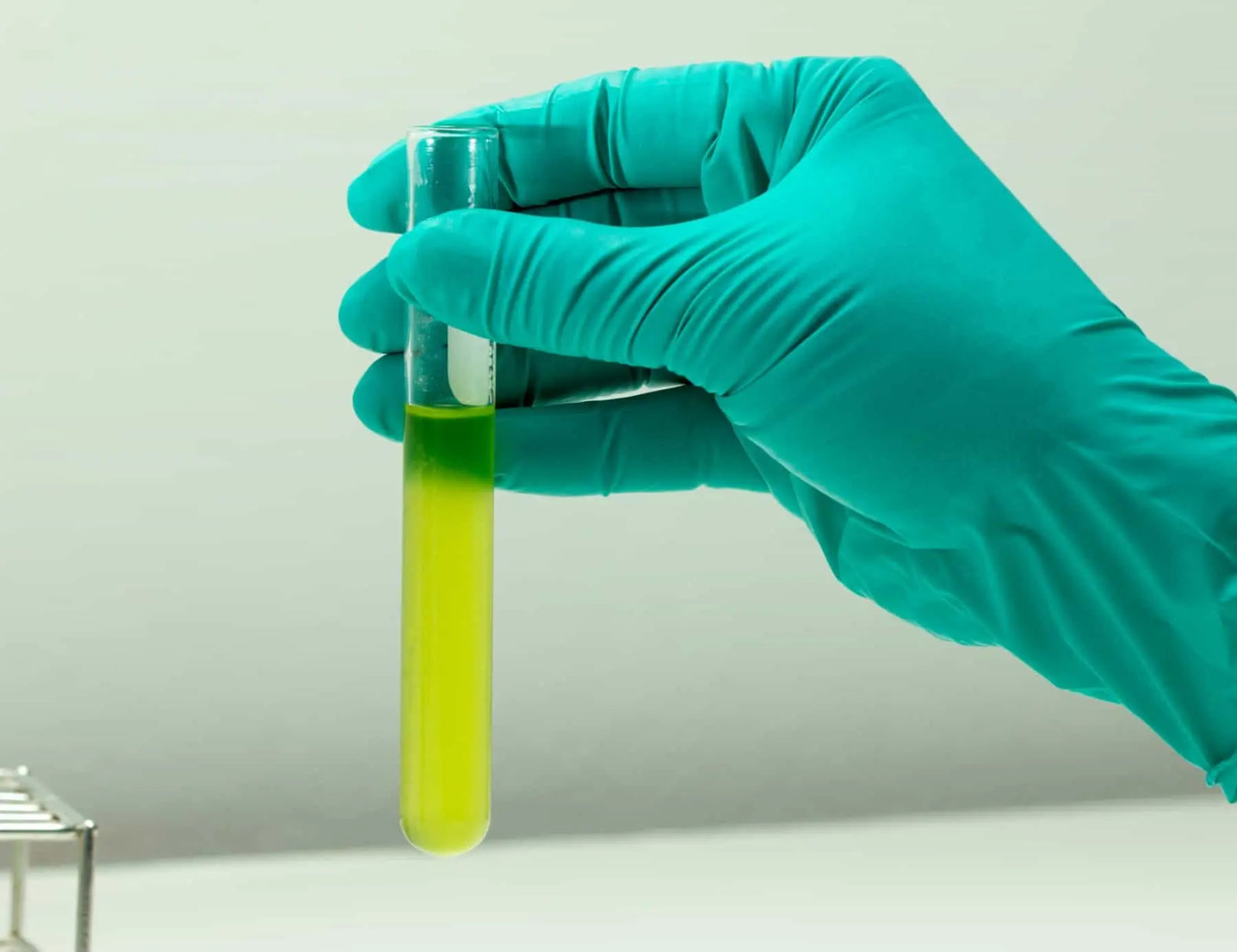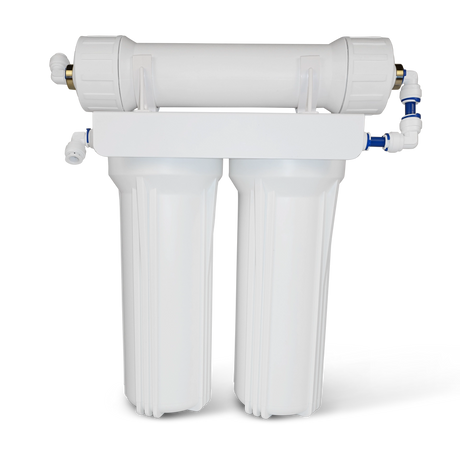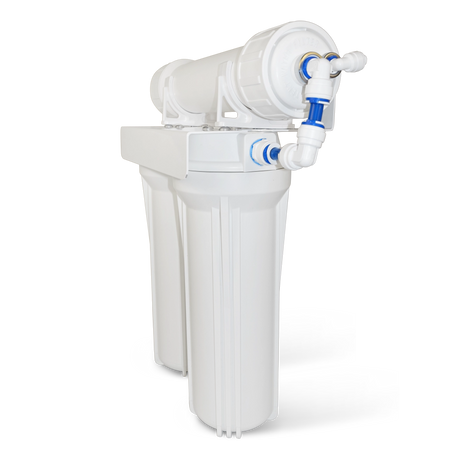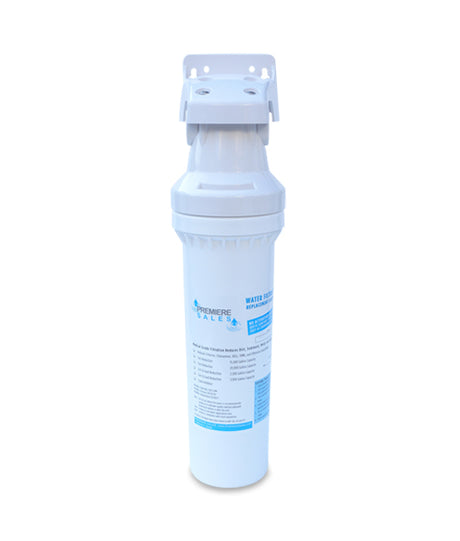How to Remove Algae from Drinking Water and Prevent It in Water Filter Pitchers

Even if the algae in drinking water is not deemed as harmful, it can impact the taste and odor of drinking water. For example, last summer residents of Fayettville, Arkansas were advised that their tap water tastes and smells differently due to increased amounts of algae in Beaver Lake (officials say the water was still safe to drink). The algae gives a “fishy” taste and smell to water.
How to Get Rid of Algae in Drinking Water
The best way to get rid of algae in drinking water is with a water filter. The type of water filter required will depend on the type of algae. For example, if there's a chance of blue-green algae (cyanobacteria) - which is actually a bacteria, not algae - nanofiltration, ultrafiltration, or reverse osmosis is best. For other types of algae, an activated carbon filter will take care it. Check our the best water filters for algae below.Best Whole House Water Treatment Systems for Algae Removal
A whole house water filter installs at the point of entry and will remove algae in your incoming water supply. This means it will filter the water for all the taps in your home.Multistage UF membrane system for superior bacteria and chemical removal, plus scale inhibitor prevents limescale and stops corrosion: PS-2000C Ultrafiltration Membrane System with activated carbon block filter
Ultrafiltration is a highly effective water filtration process to remove bacteria, algae, viruses, protozoa, and particles/solids on a microscopic level. It ensures the water throughout your entire home is clean and safe. This multistage whole house filter system includes a 0.02 micron UF membrane and a 5 micron activated carbon filter with scale inhibitor. The ultrafiltration process eliminates solids and particulates at a super fine level, and the carbon block finishing filter removes chemicals like chlorine, chloramine, benzene, radon, solvents, trihalomethane compounds (THMs), methane tertiary butyl ether (MTBE), and volatile organic chemicals (VOCs) such as pesticides and other man-made chemicals. Plus, the scale inhibitor product stops limescale and stops corrosion.Best Drinking Water Filters for Algae Removal
Best all-round for price: EC-700 Under Sink Water Filter System, 2,500 Gallon Filter Life
The EC-700 under sink water filter system removes contaminants 0.5 micron and larger including chlorine, chloramine, cysts (including cryptosporidium and giardia), lead, mold, MTBE (methyl tertiary butyl ether), oxidized iron / manganese / sulfides, offensive taste and odor, sediment / dirt / cloudiness, THMs (trihalomethanes), VOCs (volatile organic chemicals), and more. It absorbs offensive tastes and odors including common earthy, moldy, or fishy ones. It retains vital minerals found naturally in water. The EC-700 is easily installed and provides crisp, clean drinking water. Extremely long cartridge life of 2,500 gallons and excellent flow rate of 1.75 gallons per minute.Latest & greatest technology (ultrafiltration with flushable membrane): PS-PURUF Ultrafiltration Under Sink Membrane Purification System
Ultrafiltration (UF) is a powerful water filtration process which removes particulates and solids on a microscopic level. A UF membrane acts like a barrier using slight pressure to separate particles like bacteria, viruses, germs, pollen, algae, and organic molecules from the water. The PS-PURUF has 0.02 micron membrane which removes over 99.9% of contaminants, bacteria, cysts, viruses, giardia, and cryptosporidium. Best of all, innovative technology lets you flush (clean) the membrane whenever it gets full of contaminants! No storage tank required means no bacteria growth and significantly less space required.Preventing Green Algae and Bacteria in Your Water Filter Pitcher (Brita, PUR, ZeroWater)
Consider switching to an under sink water filter or countertop water filter. Even though an under sink water filtration may seem more expensive, the better filtration is totally worth it! Not to mention, you'll save the time and expense of replacing filters as often. Pitcher filters may claim to reduce up to 99% of contaminants but in reality they are limited by what they can filter due to the filter media and micron rating. For example, Brita, PUR, and ZeroWater pitcher filters do remove bacteria or viruses. An appropriate under sink water filter does a much better job of filtering out dissolved solids, bacteria, chemicals, and more. This means no more green algae, mold, floating black specks (charcoal particles), sediment, stains, or other bacterial buildup in your pitcher or the filters themselves.
Ensure a tight seal on top of your filtered water pitcher. The lid and spout form a tight seal with the rest of the pitcher when closed. A tight seal stops air, dust, food particles, and contaminants from getting in. If your pitcher doesn't have a tight seal you might as well recycle it and get a new water filtration solution.
Wash your filter pitcher often and thoroughly. This one seems like a no-brainer but folks often forget to do so. Wash your filter pitcher out once a month at the very least. Wash it thoroughly with dish soap or run it through the dishwasher for even better results. Although it may take week or months for bacteria to accumulate to a level where it's visibly nasty, washing it consistently will help with the bacteria you can't see.
Replace the water filter often. Be sure to change your filter as often or more than the recommended amount. When filters get clogged with sediment and other particles then they can become breeding grounds for bacteria and algae, which will reduce the filtering abilities even further. When your filter sensor light gets to yellow it's time to swap in a new one. This will unfortunately end up costing you a few extra dollars but it's worth it and if you buy the filters in bulk you'll be fine.
Wash your hands and the replacement water filter before using it. Before you replace the filter in your pitcher, wash your hands thoroughly with anti-bacterial hand soap. While you're at it, carefully wash the plastic exterior of the Brita filter too. Or, wipe down the outside of the Brita filter with an antibacterial wipe. Then proceed to rinse each Brita filter under cold water for the recommended time before putting it in the pitcher.
Keep your water filter pitcher in the fridge. Keeping the water cold helps reduce and prevent bacterial or algae buildup.
Don't drink directly from the water filter pitcher. It's nasty, just don't do it.
Follow the instructions - dump the first 1-2 pitcher fillers after you replace your filter. Avoid charcoal dust contamination by running a couple fills through your pitcher and dumping them after you change the filter in your pitcher. Even though Brita and other manufacturers claim these black charcoal specks are harmless, it's just not healthy to drink them.
We originally published a version of this article in March 2017. We’ve changed and updated this article in March 2021 with more information about algae in drinking water including how to prevent green algae in pitcher style filters such as Brita, PUR, or ZeroWater water pitchers.





